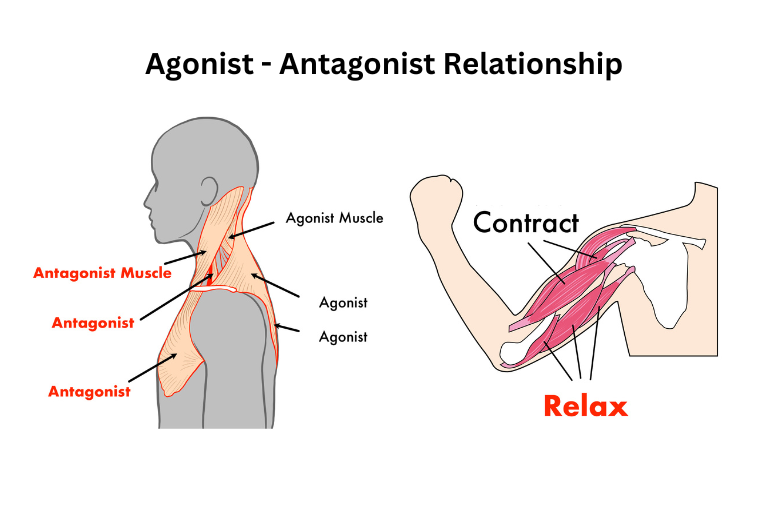How to Deal with Tinnitus (Ringing in Ears) 5 TIPS
I would like to share with you what you can do with 5 TIPS and how to manage one of the most annoying conditions: tinnitus or ringing...

August 10, 2024
Have you ever had a neck spasm? It can be super uncomfortable and cause your neck to stuck in one position, which can be pretty annoying if you’re not expecting it. I wanted to share with you today how to relieve neck spasms yourself. We’ve all been there – you fall asleep on the couch or floor and wake up in the middle of the night with a stiff and sore neck. It can be tough to move around and get comfortable again. But don’t worry – this technique is sure to help you release the tension and get some much-needed relief from that pesky spasm.
We understand this can be a lot of information and overwhelming: if you are looking for more support and answers, set up a free consultation with our Acupuncturist & Certified Athletic Trainer, Satoru Ozawa. Share your story, get your questions answered, and learn how you can set yourself up for tremendous success in achieving a healthy life.

Experiencing a crick in your neck can be uncomfortable and painful, causing spasms and irritation. It may lead to difficulty turning your head due to muscle or ligament inflammation in your neck or shoulder. Most of the time, you don’t find anything on any medical diagnosis exam like X-rays, MRI, or CT scans. Typically, the pain should subside within a few days to a week, but if it lasts more than two weeks, seeking medical attention is recommended.
Although the exact causes are still unknown, neck spasms can be triggered by repetitive movements or bad posture, such as sleeping in an awkward position with the neck. However, they may also be a sign of a more serious underlying health problem. In my experience, some patients have developed neck spasms after overeating or experiencing a hangover the previous day. It seems that there may be a link between the digestive system and neck spasms.
So what muscles are involved with cricks in the neck? There are significant muscles involved when you get neck spasms. Trapezius, SCM, Splenius, & Levator scapulae are the most common muscles that get neck spasms.

The trapezius is a large muscle that attaches to the upper back and neck. It contracts when you look up or shrug your shoulders.
The SCM muscle is a prominent muscle located at the front of your neck. It runs from your ear to your collar bones and is responsible for rotating your head diagonally and obliquely.

There are two major muscles in the splenius group, namely the capitis and cervicis muscles. These muscles attach to the base of the skull and thoracic spines.

The Levator Scapulae muscle originates from the cervical spine and attaches to the scapula (wing bone). It is commonly believed to be the root cause of neck and shoulder spasms.
This technique involves contracting the antagonist muscles to promote relaxation in the painful muscle on the opposite side. For example, if you experience pain on your left side, you can contract the muscles on your right side to relieve the spasm. It’s a very safe, simple and effective approach.

Have you ever noticed how when you flex your arm, your biceps muscle gets bigger while your triceps muscle looks smaller? That’s because of the relationship between agonist and antagonist muscles in your body. When one muscle is contracting, the other one is supposed to relax. So, when your biceps muscle is contracting, your triceps muscle is taking a break. It’s like a team effort – your biceps can’t do its job if your triceps are still working hard. It might sound complicated, but it’s a pretty simple explanation for how these muscles work together.
If you are experiencing neck spasms due to tightness and contraction, this theory can assist your body in releasing the spasm and achieving relaxation to reduce pain.
To start, begin by testing your neck movement. Gently turn your head to the left and right, noting which side is more painful. If you feel more discomfort turning to the right, try turning your head to the left instead. Next, take a deep breath in and as you exhale, slowly move your head to the left with your trunk. Count to 5, then relax. You can repeat this exercise up to 3 more times.

The next exercise is to see which direction causes more discomfort when you look up or down. If looking up causes pain, try looking down instead. Take a nice deep breath in and slowly exhale while lowering your chin down with your upper body. Hold this position for 5 seconds, then relax. Do this three more times for quick relief.

For the next exercise, we’ll be tilting our heads to the left and right. Just like before, try to figure out which side is causing you pain and tilt your head towards the other side. Take a nice, deep breath in, and as you exhale, gently tilt your head and body. Hold it for 5 seconds, then relax. Repeat 3 more times.

We'll be happy to answer your questions.
If you are experiencing neck spasms, it may be due to muscle tightness or inflammation. To alleviate the pain, I suggest resting and avoiding excessive movement. Applying a Neck Wrap can also help increase blood circulation and reduce discomfort. However, before attempting massage or stretching, it is important to consult with a healthcare professional to ensure it is safe for you to do so. If these remedies do not provide relief, it is recommended to seek medical attention as there may be more serious underlying issues affecting your neck.
Acupuncture is a highly effective treatment for neck spasms, including cricks in the neck. During your initial acupuncture session, we assessed your neck movement and muscle tightness, which may have been causing discomfort and making it difficult to turn your head. Our treatments are focused on reducing inflammation and spasm, while also restoring movement in the neck. Numerous studies have shown that acupuncture is a practical solution for reducing pain and inflammation, thanks to its ability to stimulate the body’s natural painkillers. You can expect to feel relief from your pain after each session.
As a general rule of thumb, the sooner one receives treatment, the better the prognosis. Some patients come for neck spasm pain treatment months or even years after the initial onset, and these chronic cases are often more complex and take a much longer time to achieve results. Even then, recovery is not guaranteed.
Regarding the frequency of treatments, Acupuncture follows a simple rule. Acute and relatively new conditions are most effectively treated with more frequent visits, whereas chronic and old conditions can benefit from more widespread treatments. In other words, if you just had an onset of neck pain, you will probably be prescribed 2-3 treatments per week in order to get the most effective results, and chronic cases will generally come in only once a week.
If you or a loved one was diagnosed with neck spasm pain and want to learn more about Acupuncture and whether it’s appropriate for your case, send us a message through our contact page. Thank you for taking the time to read this blog post! I appreciate your interest and hope to see you again for future posts.
We understand this can be a lot of information and overwhelming: if you are looking for more support and answers, set up a free consultation with our Acupuncturist & Certified Athletic Trainer, Satoru Ozawa. Share your story, get your questions answered, and learn how you can set yourself up for tremendous success in achieving a healthy life.
I would like to share with you what you can do with 5 TIPS and how to manage one of the most annoying conditions: tinnitus or ringing...
A 45-year-old man came to my clinic looking for some relief from the ringing in ears because he discovered that acupuncture might be a great option to...
I want to show how to alleviate tinnitus, which sounds like whistling, buzzing, roaring, or clicking, especially at night, using 10 acupressure techniques.

Satoru Ozawa, L.Ac, ATC
hariQ acupuncture & herbs
Licensed acupuncturist, Certified Athletic Trainer and Chinese herbal specialist. With his 10 years of experience in Oriental Medicine, he will recommend the best natural Remedies, including Acupuncture, Chinese herbs, and health tips to relieve your suffering.